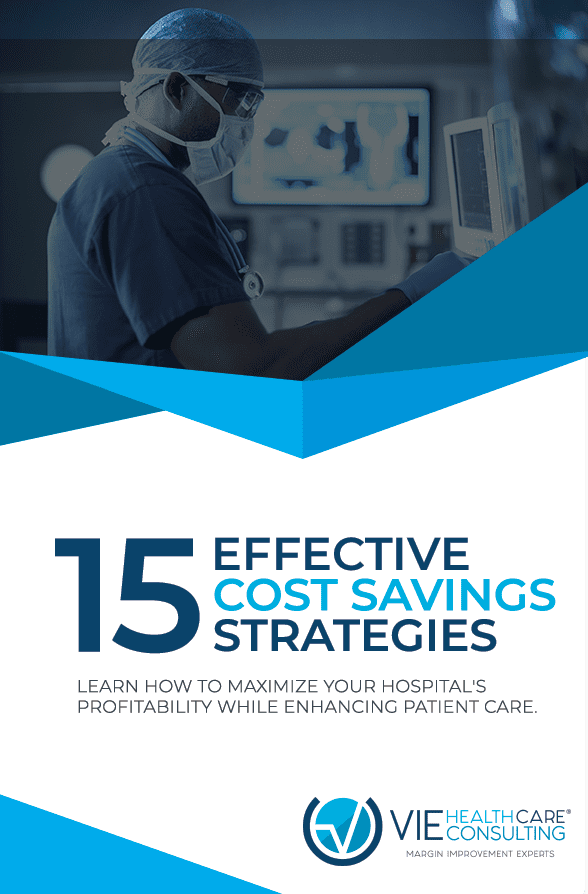Non-Labor Cost Reduction Best Practices
By: Lisa T. Miller, MHA
With the challenges in our current healthcare environment, every hospital needs to be focused on cost reduction. Containing and reducing indirect expenses is as important as finding new sources of revenue to improve the financial health of an organization. Monitoring spending is one of the most important factors behind non-labor cost reduction best practices. $100,000 in annual cost savings, with a hospital who has 2% operating margin, is equivalent to $5 million in new revenues. Cost savings exist in all hospitals.
Cardiovascular and Orthopedic supplies (clinical and physician preference items) are driving spend growth at a rate of 17% and 13% respectively. This area needs constant analysis as new products and technology are consistently being brought into the marketplace and introduced into your hospital with increased costs added to your bottom that in most cases will not add to your revenue.
Clinical supply chain and physician preference items present a great savings opportunity
- A typical 400+ bed hospital spends about $56M annually on Physician Preference Items.
- On average, $8.4 million (15%) could be saved on these items on an annual basis.
However, this can be challenging and requires support from hospital administration and physicians with detailed reimbursement analysis. Negotiating with vendors with your hospitals actual reimbursement information for the past 12 to 18 months provides the absolute best method of achieving competitive pricing. These facts speak for themselves. A hospital cannot operate in the red in high cost services lines such as orthopedics and spine surgery.
A Roadmap
Your hospital can begin their cost reduction process with a review of a12 month vendor spend report from accounts payable. Segment this report into clinical and non-clinical areas. Then identify the top 20 spend vendors for each area and request a copy of the contract for each of these vendors. A best practices process is to pull actual invoices for these 40 vendors and audit the invoices to the actual contract to see if you are receiving the pricing you were promised via the contracts.
Then review your contract for terms and conditions and begin to perform market research to see if your hospital has price optimization opportunities – can your organization achieve better pricing with your existing vendors?
Analyze your data
Pull your hospitals spend data together from various sources, which includes your information systems, invoices and request a 12 month detailed purchasing history from your vendors. It is critical for you to understand your total spend and specific utilization with each vendor and have not only a 12 month detailed analysis for each vendor but most importantly focus on the last 3 months of utilization to truly have insight into what your spend trends are currently.
Additional Areas to Review
- Your organizations top 500 utilized items
- Purchased service contracts (each department)
- Lab/regent contracts
- Service & maintenance agreements
- Overstock/expired inventory
Quick Opportunities
Review your leases hospital-wide to ensure none are being paid past its term as most leases have an automatic renewal clause and goes into effective if you do not provide the vendor with end of lease arrangements as detailed in your lease contract. Many hospitals pay unnecessary costs in lease payments that should have ended months sooner and those extra payments could have either gone into the fair market value buy-out of the lease or into new equipment.
Telecommunications, gas, electric and water audits are important to schedule every year as errors can be identified and fixed immediately and new pricing opportunities always exist.
Ask your employees – a great way to consistently provide cost reductions to your hospitals bottom line is to have a well-planned and supported employee involvement program. You may not know where all the savings opportunities are in your hospital, but your staff does. The people in the front lines doing the work day in and day out can provide a wealth of revenue to your hospital.
In summary, the key is to consistently review your hospitals spend and always ask questions. It is important to schedule quarterly reviews of your contracts to ensure compliance. Verify pricing, rebates and all promises made to your hospital. Have your contracts in a contract management system that is being utilized to its capability. Product utilization and value analysis teams per department are also essential. Driving a well-planned cost reduction initiative with a scorecard system is necessary and it is most effective when led by the CFO.


